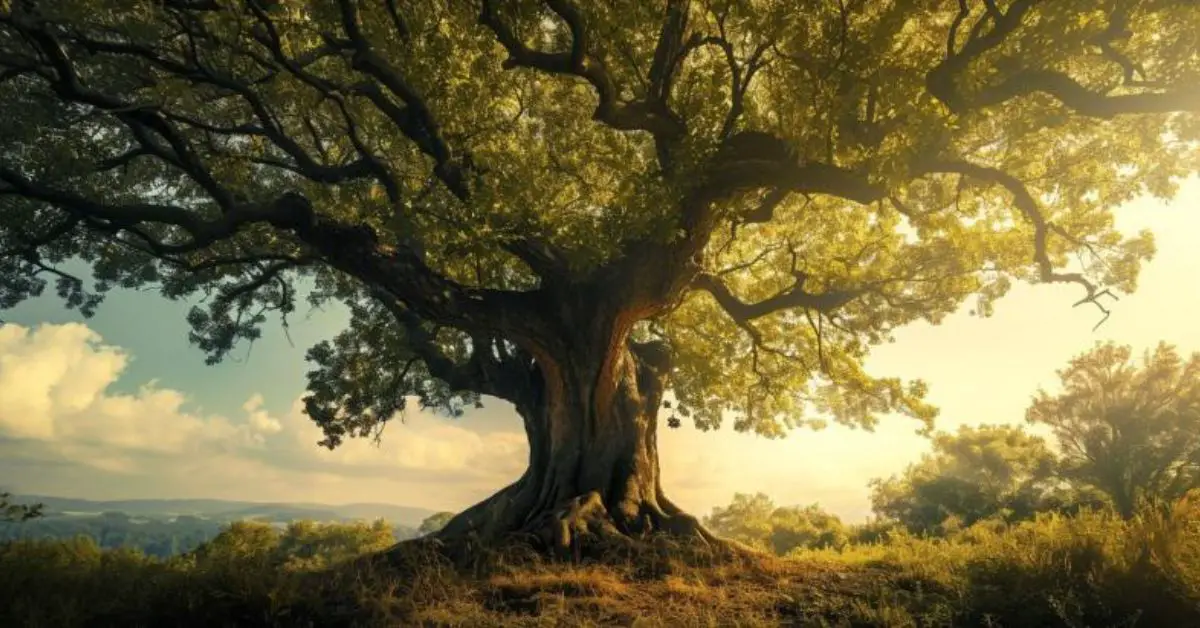In the Bible, trees are more than just part of the natural landscape; they often carry symbolic and spiritual significance. From the trees in the Garden of Eden to the fig tree Jesus cursed, trees are used to represent life, growth, and even nations. They are symbols of strength, beauty, and prosperity, and sometimes of judgment and renewal.
Want to explore the rich tapestry of meanings and symbols associated with trees in the Bible? Keep reading to uncover the deeper significance of trees in biblical narratives.
What Does the Bible Say About Trees?
Trees in the Bible are not just physical entities; they often bear profound symbolic meanings. Throughout the scriptures, trees are used as metaphors and symbols, representing various spiritual truths and principles.
In the opening chapters of Genesis, trees play a crucial role. The Tree of Life and the Tree of the Knowledge of Good and Evil in the Garden of Eden are central to the story of creation and the fall of man. These trees symbolize life, choice, and the consequences of human actions.
God’s view of trees, as seen in the Bible, is multifaceted. Trees are used to depict life, sustenance, and stability. For instance, Psalms and Proverbs often use the imagery of a tree planted by streams of water to represent a righteous person who is thriving and fruitful.
In the New Testament, Jesus uses trees in his parables to teach spiritual lessons. The fig tree, for instance, is used to represent Israel and to teach about judgment and repentance. Jesus’ cursing of the barren fig tree is a powerful image of the consequences of unfruitfulness.
Trees are also used to symbolize restoration and hope. The prophetic books of the Old Testament use the imagery of trees to depict the restoration of Israel and the coming of the Messiah.
In Revelation, the Tree of Life reappears, symbolizing eternal life and healing in the New Jerusalem. This continuity from Genesis to Revelation highlights the theme of redemption and God’s plan for humanity.
Moreover, trees are often used in the Bible to illustrate principles of growth, strength, and resilience. They are seen as sources of shelter and sustenance, highlighting God’s provision for His creation.
In essence, trees in the Bible are rich with meaning, representing a range of concepts from life, choice, and consequences to growth, sustenance, and redemption. They are powerful symbols used to convey deeper spiritual truths and to illustrate God’s principles and plans.
Bible Verses About Trees
- Genesis 2:9 – “The Lord God made all kinds of trees grow out of the ground—trees that were pleasing to the eye and good for food. In the middle of the garden were the Tree of Life and the Tree of the Knowledge of Good and Evil.” This introduces the significant trees in the Garden of Eden.
- Psalm 1:3 – “That person is like a tree planted by streams of water, which yields its fruit in season and whose leaf does not wither—whatever they do prospers.” This verse symbolizes a righteous person as a flourishing tree.
- Matthew 21:19 – “Seeing a fig tree by the road, he went up to it but found nothing on it except leaves. Then he said to it, ‘May you never bear fruit again!’ Immediately the tree withered.” Jesus uses a fig tree to teach about spiritual fruitfulness and judgment.
- Revelation 22:2 – “Down the middle of the great street of the city. On each side of the river stood the Tree of Life, bearing twelve crops of fruit, yielding its fruit every month. And the leaves of the tree are for the healing of the nations.” The Tree of Life in Revelation symbolizes eternal life and healing.
- Isaiah 61:3 – “They will be called oaks of righteousness, a planting of the Lord for the display of his splendor.” This prophecy uses the imagery of trees to depict the restoration and righteousness of God’s people.
- Jeremiah 17:8 – “They will be like a tree planted by the water that sends out its roots by the stream. It does not fear when heat comes; its leaves are always green. It has no worries in a year of drought and never fails to bear fruit.” This verse uses a tree to illustrate trust and resilience in God.
- Mark 11:21 – “Peter remembered and said to Jesus, ‘Rabbi, look! The fig tree you cursed has withered!'” This event demonstrates the power of faith and the importance of bearing spiritual fruit.
- Ezekiel 47:12 – “Fruit trees of all kinds will grow on both banks of the river. Their leaves will not wither, nor will their fruit fail. Every month they will bear fruit, because the water from the sanctuary flows to them. Their fruit will serve for food and their leaves for healing.” This vision symbolizes life and healing coming from God.
- Proverbs 11:30 – “The fruit of the righteous is a tree of life, and the one who is wise saves lives.” This proverb likens the influence of the righteous to a life-giving tree.
- Hosea 14:6 – “His young shoots will grow. His splendor will be like an olive tree, his fragrance like a cedar of Lebanon.” Hosea uses tree imagery to depict the restoration and blessing of Israel.
The Bible’s portrayal of trees offers us a rich tapestry of symbolism and spiritual significance. From the story of creation in Genesis to the visions of the New Jerusalem in Revelation, trees are consistently used as powerful metaphors for life, growth, judgment, and redemption. They remind us of God’s provision and care, the importance of spiritual health and fruitfulness, and the eternal life promised through Christ.


